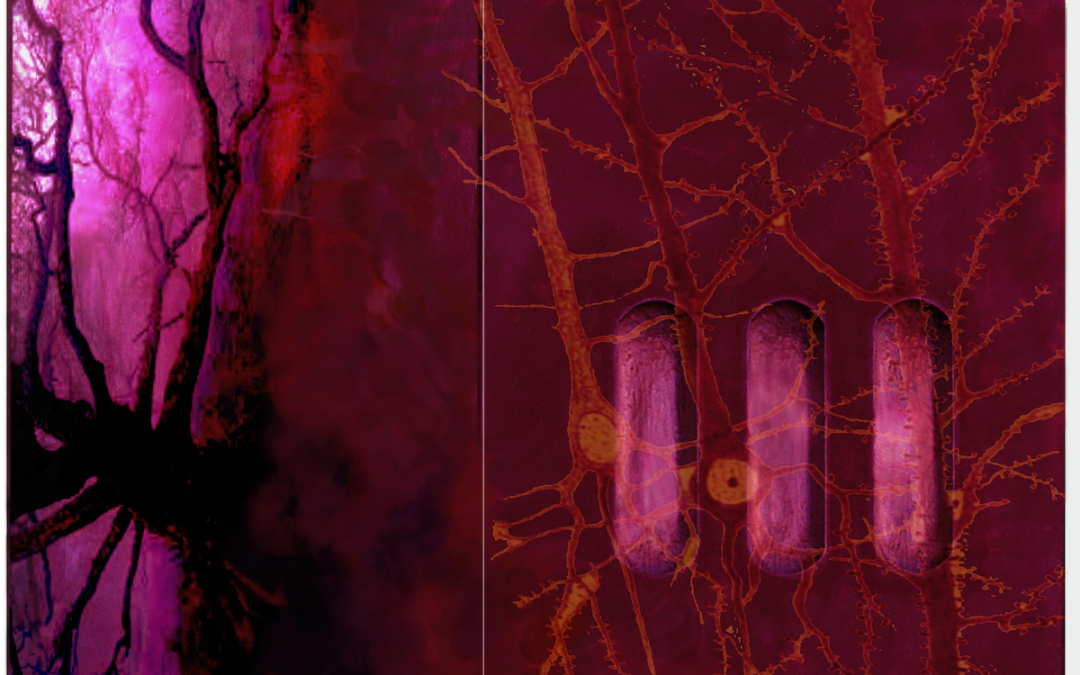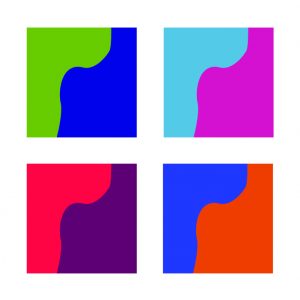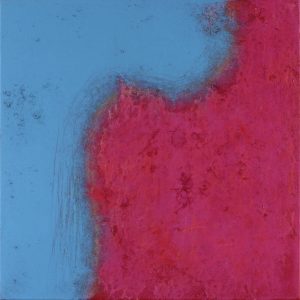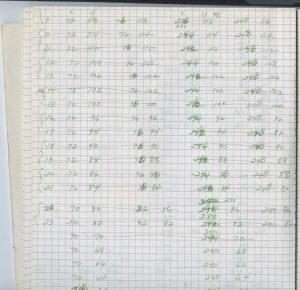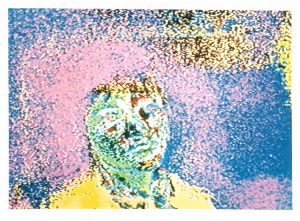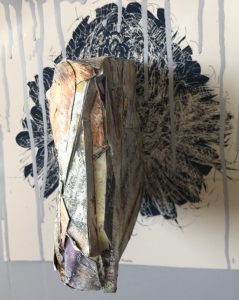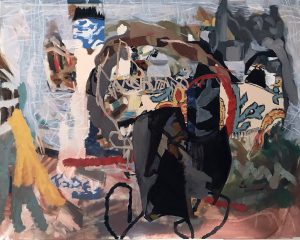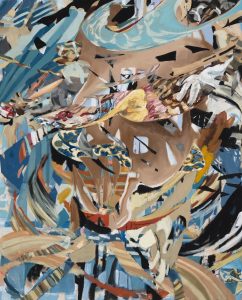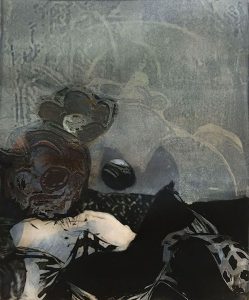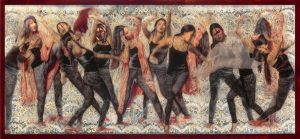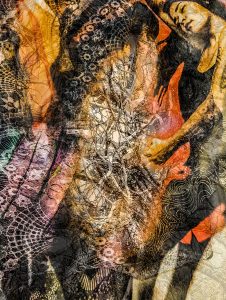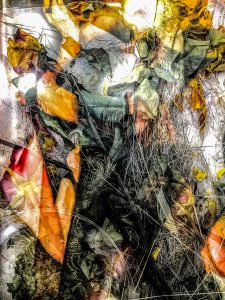Throughout the history of art there have been innovations that have entirely revolutionized the way work is made, looked at, and thought about. Painting with oils, the technique invented and perfected by Early Netherlandish artists, meant that a higher degree of realism and polish could be attained than with egg tempera, the most popular medium to date. The masters of the Italian Renaissance embraced the new pigments, and they became the preferred means means for producing so-called “high art” for the next 500 years.
Similarly, photography, which seemed for a time a threat to other kinds of image making, has evolved into its own multi-level and multi-layered field and has even been incorporated into mixed media work by painters, installation artists, and printmakers as another means for launching their ideas into the world.
As has been oft remarked, the digital age that’s been dawning in the last few decades represents as big a revolution in human history as Gutenberg’s printing press, and we’ve yet to sort out the full impact of rapidly developing technologies on our psyches and our culture. But artists are right there at the frontlines, and as you’ll read below, have been since the beginning of personal computing.
So here are ways in which a few more Vasari21 members harness the unstoppable flow of gadgetry to serve their own ends. Someday, someone somewhere will pull it all together for an exhibition or a book, but in the meantime, let this serve as another sampler of the collaborations possible between the artist and the machine. Ann Landi
Chandrika Marla
Once upon a time I was a fashion designer. I used Adobe Illustrator to sketch clothing on a screen, create color palettes, fabric prints, and embroideries. I’ve carried this skill over to my process as an artist, and sometimes plan my paintings on a laptop.
My canvases have between 7 and 20 layers of acrylic paint and can take almost a month to complete. Mostly, it’s a very organic process, and I know a painting is finished when it feels right, evoking a certain mood or a memory. But there are times when I want to be sure of where I’m headed. A typical painting, by me, has two color expanses and I need to make two key decisions:
- The abstract shape I want to proceed with.
- The final colors of the painting.
This planned approach is handy when I’m in a time crunch. If I spend a month making a painting I’m not satisfied with, I could waste a canvas, along with seven or eight large tubes of paint. And if I have a deadline coming up, much as I’d love to, I can’t always let my emotions guide the work.
As you can see in the first image, I created four color options in Adobe Illustrator. I then chose one of the three and started working toward that end. The early layers had no relevance to the final plan, but as I got closer to the last few coats of paint, I focused on the original blue and fuschia pink that I had selected on Illustrator.
Linda Vigdor
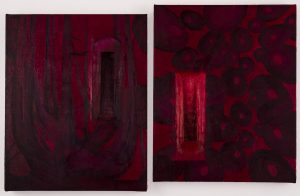
Linda Vigdor, Saying Goodbye to the Banyan Trees (2 panels). 2018, water miscible oil on canvas and sculpted balsa foam and mixed media, 16.5 by 26 by 2.5 inches.
I started using computers around 1995. At first the idea was to gain skills for a day job in 3D computer animation and modeling (to support my sculpture career). But I became fascinated and for a number of years computer-based and real-time 3D became my primary medium. For a variety of reasons, I have not worked with digital 3D for more than a decade. In part, I realized the tactile aspect of making art with messy materials is important to me. I now use the computer only in service of my analogue art work—for researching images to work with and to develop my paintings.
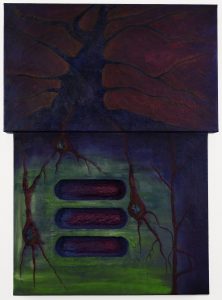
Linda Vigdor,Symphonic Dissolutions ((2019), water miscible oil on canvas, Corafoam, and mixed medi, 27 by 20 by 2.25 inches
In my recent work, I have been integrating three types of imagery: biological elements (cells or neurons), nature (old growth or endangered trees, melting glaciers), and architectural elements or symbols (staircases, labyrinths) and I tend to do extensive research online so that I now have a good-sized digital image collection.
I generally start with one image that has captured my attention. Using my iPad Pro, Apple Pencil (2016 model), and the ArtStudio Pro app, I experiment with adding other images to develop the basis of a painting. I construct this painting sketch in layers, which allows me to add, replace, delete, and transform at will. I find this approach to be kind of a meditative practice of iterating a painting, but it also helps me keep working on a regular basis even if my day job exhausts me. I end up with several potential directions for the painting and eventually choose one.
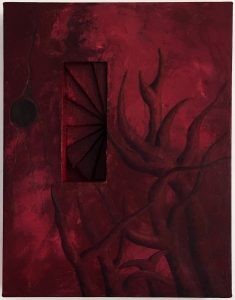
Linda Vigdor, Where All Would be Silent and Still (2019), water miscible oil on canvas, basswood, mixed media, 18 by 14 by 2.25 inches
For my oil paintings, I start with sculpting the “box” element that is embedded into the canvas and create a support for that structure. Once I start painting, I will photograph the piece in progress and further manipulate the image on the iPad. Ultimately, because working with paint is different from painting with a computer, the final work may or may not be at all like the original digital sketch. Another difference, perhaps more substantial, is that as the painting develops my use of the iPad diminishes and the focus turns to the qualities of the paint and to the conversation developing between me and the painting
Linda Vi Vona
This screen image below was photographed from the monitor of a Mindset computer (an IBM pc) in 1988. I was taking an experimental digital computer class, specifically created for artists and designers, at Long Island University in Old Westbury, NY. Coincidentally, Pixar’s first studio was at the same campus.
Mindset offered the speed and advanced graphics resolution heretofore unavailable in a personal computer, and its best system had 256K RAM with two drives priced around $2,500.
The process was complicated and entailed plotting each pixel beforehand copying a photo or slide that was input via a video-card port. (The notebook entry shows the x and y calculations). After creating two images on the university’s Mindset, I bought an Amiga personal computer, which was easier to use to screen graphic capabilities. Andy Warhol made this system famous. Two years later I bought my first Mac and took an intro Photoshop course in Pratt’s Puck building in New York. Though I’ve worked mainly in mixed media since, the experience taught me how to utilize IT with traditional materials, as in a recent work, Ode to Adelia Prado, a combination of two digital prints reconstructed and mounted on painted canvas.
Randi Reiss-McCormack
Ten years ago I returned to printmaking when I started working with Sol Print Studio, a printshop focusing on photopolymer etching. I quickly realized that the big difference in photopolymer etching and traditional etching is in the process of making one image on a light-sensitive plate, one time, versus copper etching, where you can make and scratch out marks almost endlessly. In photopolymer, you expose the plate to one transparency, which can be hand-drawn, photographic, or both. As a mixed-media artist who frequently uses collage in my drawing practice, it appealed to me to take a work drawn by hand and then combine and collage in Photoshop layers.
I then became fascinated by how to make the marks of Photoshop feel as if they were the erased and scratched lines of a metal plate. From there, I became interested in all the marks available in Photoshop, which as most users find, is quite vast. I was seeing the patterns of mark making in Photoshop as just another way to make a mark that can be exploited by scale or transferred to another media. So something that started very practically became a different way of drawing for printmaking, which then became a new way of drawing in paint and other works.
The other appeal of using the computer is that I am left handed, but as with most left-handed people I had adjusted to using a right-hand mouse or manipulating the touch pad with my right hand. This became an advantage, in my mind, as it challenged me to make marks in a clumsier way. I like to have media intervene in my process, and this was a good way to keep works fresh.
The same approach carried through with paintings. The back-and-forth motions of drawing on an image of a painting in progress on a touch pad were a way for me to see the work with fresh eyes. I now have a tablet that I use with a pen and my left hand, but usually I prefer the clumsier right hand with the mouse or touch pad. The wrong-handedness really has brought another element in my thinking about drawing and seems to be where I go to work out problems in painting, drawing, or printmaking.
Cindy Dominguez
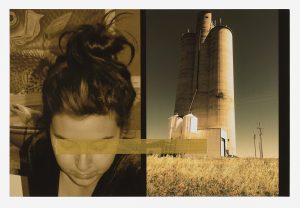
Cindy Dominguez, AM/FM Transistor Radio (2018), archival pigment on Canson Rag Photographique, mixed media. 27 by 30 inches 2018
I came up through the University of New Mexico photography program in 1982. It was a happening department and even prestigious in some corners. But thinking back, I remember what a big deal it was when UNM got its first color printer. At first, I would expose my image in one closet and run to another closet to feed it through the printer. I would then collage my images and reshoot them with color gels. And, of course, just to make the process even more byzantine, because the printer couldn’t do large sizes, I’d then take my images to Kinko’s, where they would print twelve 9½-by-17 separate pieces of each single image. Next, I would spray-mount the pieces to make the final three-by-six-foot collage image. It was a long and difficult but strangely satisfying process.

Cindy Dominguez, Beach Front (2019), archival pigment on Canson Rag Photographique, mixed media, 22 by 30 inches
Over the years I dabbled with other technologies, but things changed dramatically in 2005 when I started working with a Mac and a hand-me-down pirated version of Photoshop CS3. I was able to make composites using my photographs with the ease of a sophisticated, complicated, but strangely intuitive tool. Photoshop became my primary creative device in the same way the enlarger had been my essential tool for monochrome prints. Dialing in percentages of cyan, yellow, and blue with the enlarger now became a simple hand swipe of the color chart on Photoshop. The collages I made earlier with scissors, razors, tape, glue, and color gels were now clean, carefully designed, precisely constructed images.
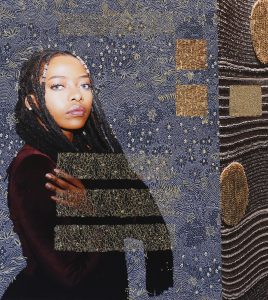
Cindy Dominguez, Tribute to Alaia 1 (2019), archival pigment on Canson Rag Photographique, mixed media, 22 by 30 inches
Analyzing the way I used to collage photos physically and how I now do the same digitally tells me a lot about process. I realize that although Photoshop allows precision and endless options, it can never satisfy my itch to experience the work physically and to find intimacy via the tactile parts of my art.
There is a strange distance in using my computer exclusively. My photography is now cleaner, clearer, and sharper. But none of that alone makes it better art. Which is why I always augment the work. In recent years I’ve been painting and sewing on my photos, which satisfies me as an artist and adds dimension, distraction, and overall interest in the finished pieces.
Diane G. Rolnick
I grew up in a family that always had cameras and an ancient movie camera that my father operated documenting family excursions. After owning a series of Brownie cameras as a child, I bought a used Nikon when I was a young teenager and photographed my botanist mother’s amazing garden through the years.
When I was eight years old I ventured into a local ballet studio and instantly knew I had to dance. I studied ballet and became a member of the Andre Eglevsky Ballet Company at twelve. We performed all over the New York area and until my body gave out at sixteen, I lived and breathed the ballet. Moving forward I went to art school at Drexel Institute of Technology (as it was known then) and Rhode Island School of Design, where I studied, design, photography, drawing, painting and sculpture.
I began using my camera daily during my mother’s last illness in 2012 when I was unable to work in my studio. Living in the East Mountains of New Mexico, I photographed life on my ranchito—the gardens, animals, sky, and shadows. I started a blog called “Abbakiss and the Artist,” named after my baby goat, Abbakiss, about the odds and ends and absurdities of daily living. At this time, I began to experiment with digital layers in Photoshop for the blog imagery. This led me to physically combine various imagery printed on silk, film, and paper. When I moved to Santa Fe three years ago, I bought a large-format printer and began making prints on fine art papers, experimenting with layers of patterns, figures, natural forms, and movement. The work also extended to photo transfers on Plexiglass, aluminum, and Yupo paper, and layering with acrylic grounds, spray paint, and ink and pencil.
Dance has wound in and out of my life and work through the years. The complexities of humans with our subtle nuances and expansive modes of expression, gesture, movement, moment, action, interaction, and reaction offer to me a sense of wonderment. It is a dance that repeats itself in so many different variations and levels. The natural world has also been important to my work and my daily walks and picture-taking in the arroyo with my dog, Cooper, lets me experience this every morning as I watch growth, color, form, expression, decay, delay, delicate moments, and rebirth.
The images shown here are from a series of work developed from a shoot in my studio with Native actress, MorningStar. The original piece of this series, Dancin’ In the Rhythmics, was developed as a six-layer Plexiglass mixed-media work. The first layer is a UV printed composition of MorningStar dancing; the second layer is flattened Gramma Grass glued onto the Plexi. Next is a buffer layer of clear Plexi; the fourth and fifth layers are black spray patterns; and the last layer is mirrored Plexi to bring light through the work. As I worked on this piece for six months, I created separate “MorningStar” imagery layered with lace patterns and natural forms printed on Canon Heavyweight fine art paper. Morning Star, Delicate Weavings, and Sensation of Thoughts were developed as I worked on Dancin; in the Rhythmics.
Top: Linda Vigdor, iPad sketch (early iteration of “Symphonic dissolutions”), detail (2018. ArtStudio Pro, layered images from numerous sources, variable size
